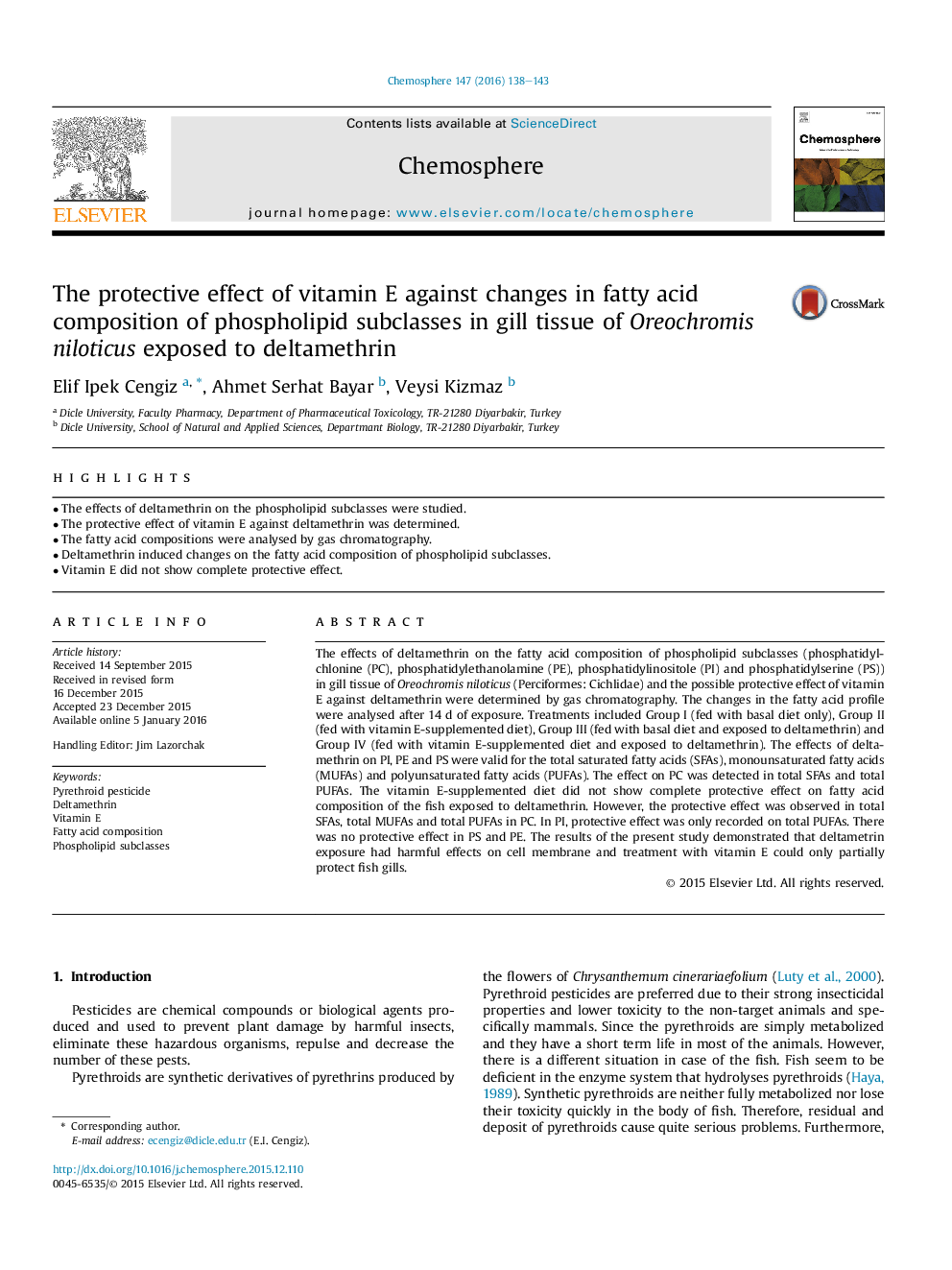| Article ID | Journal | Published Year | Pages | File Type |
|---|---|---|---|---|
| 4408039 | Chemosphere | 2016 | 6 Pages |
•The effects of deltamethrin on the phospholipid subclasses were studied.•The protective effect of vitamin E against deltamethrin was determined.•The fatty acid compositions were analysed by gas chromatography.•Deltamethrin induced changes on the fatty acid composition of phospholipid subclasses.•Vitamin E did not show complete protective effect.
The effects of deltamethrin on the fatty acid composition of phospholipid subclasses (phosphatidylchlonine (PC), phosphatidylethanolamine (PE), phosphatidylinositole (PI) and phosphatidylserine (PS)) in gill tissue of Oreochromis niloticus (Perciformes: Cichlidae) and the possible protective effect of vitamin E against deltamethrin were determined by gas chromatography. The changes in the fatty acid profile were analysed after 14 d of exposure. Treatments included Group I (fed with basal diet only), Group II (fed with vitamin E-supplemented diet), Group III (fed with basal diet and exposed to deltamethrin) and Group IV (fed with vitamin E-supplemented diet and exposed to deltamethrin). The effects of deltamethrin on PI, PE and PS were valid for the total saturated fatty acids (SFAs), monounsaturated fatty acids (MUFAs) and polyunsaturated fatty acids (PUFAs). The effect on PC was detected in total SFAs and total PUFAs. The vitamin E-supplemented diet did not show complete protective effect on fatty acid composition of the fish exposed to deltamethrin. However, the protective effect was observed in total SFAs, total MUFAs and total PUFAs in PC. In PI, protective effect was only recorded on total PUFAs. There was no protective effect in PS and PE. The results of the present study demonstrated that deltametrin exposure had harmful effects on cell membrane and treatment with vitamin E could only partially protect fish gills.
